Enab Baladi’s Investigation Team
Despite the relentless shelling, Noor, 20, found the small house that brought her and her husband together as new a reason for hope, in addition to the six-month fetus growing inside her womb. However, the price she had to pay for this hope while in eastern Ghouta was higher than the young woman has ever imagined.
In 2017, during one of the campaigns of the Syrian regime that targeted Hamouriyah town in eastern Ghouta, a mortar shell has chosen Noor’s house as its immediate target. It has destroyed the wall, and its shrapnel hit the young woman’s leg and lodged in her husband’s body, according to the story she told Enab Baladi.
The husband died on the spot and Noor, who refused to give her full name for security reasons, has suffered a severe injury which caused her to lose her left leg. She returned to her parents’ house bearing other losses, after she kept her fetus despite the health complications.
Noor joined a long list of the war-wounded people in eastern Ghouta, and was classified as a victim of the Syrian war. Today, after staying in Damascus, she is still looking for someone to take care of her and alleviate her suffering.
According to a report issued in 2017 by World Health Organization (WHO) and Handicap International (HI), the number of people who lost their arms or feet as a result of the war in Syria has amounted to 86,000 in December.
Victim… Between fainting and waking up
In a few minutes, Noor was turned into a victim and she had to rely on her mother and brothers to help her move and raise her little girl, who was born three months later. Noor was like 1.5 million Syrians who had to suffer permanent disabilities because of their injuries, according to World Health Organization (WHO) and Handicap International (HI).
The same report pointed out that 1.5 million others are suffering from variable war-related injuries, which brings the total number of registered war casualties in Syria over the past six years to 3 million.
The opposition-held areas included most of the injured people, for they have been targeted by relentless bombing of the Syrian regime and its Russian ally. The mortar shells that intermittently targeted the regime-held areas or the bombings led to hundreds of injuries ranging from minor to severe, which caused disabilities.
The Syrian regime did not issue any precise statistics about war casualties in it areas.
Alaa Haj Sulaiman, from the village of Hass in the countryside of Idlib, is another victim of the missile bombardment of the regime’s planes, causing him to suffer from hemiparesis and to become paralyzed at the age of 30.
Alaa recalled the story to Enab Baladi saying that “a fighter jet targeted the area through missile attack and caused civilian casualties. I lost consciousness after the strike. When I woke up, I found myself in the hospital. I heard the doctor telling my family that I had hemiparesis. My dreams have been shattered at that time, for I wanted to transfer the suffering of the Syrian people then, but I became the victim.”
Alaa is facing great difficulties moving around and is fully dependent on his family. The shrapnel that caused him to be paralyzed is still lodged in his back and a relapse is still threatening his life, amid the weak medical facilities in opposition-held areas and limited support offered by war-wounded organizations and centers in Syria.
One-third of the wounded are children
The report issued by World Health Organization (WHO) and Handicap International (HI) pointed out that one-third of the victims of explosive weapons are children. The writers of the report wonder: “What will happen to these children in the next 10 or 15 years? Will they be able to receive education? Will they get economic opportunities and be able to support their families? How will they be integrated into society?”
These questions that the two organizations pose set alarm bells ringing. They represent too the core of the fears of the family of the child Mohammed al-Absi, whom Enab Baladi met at his home in the town of Maar Tahroma in the countryside of Idlib.
Mohammed, 12, lost his right arm during the warplanes bombing, which targeted his neighborhood about one year ago. He recalled these moments saying: “I was playing with my friends when one of these warplanes was waging a raid. I lost my hand. I held it and I ran to the street, where I was taken to a hospital.”
Today Mohammed is facing great difficulties coping with daily life routine using one hand. “I used to harvest caper, but I am not able to do that today. My brothers help me when I want to perform ablution or drink water,” he said.
According to Enab Baladi, Mohammed does not enjoy the full support of the war-wounded organizations and centers, which have witnessed and documented his situation. His dreams and hopes revolve around obtaining a prosthetic hand.
“Limited” Healthcare
The three injured people who met with Enab Baladi agree that the health care they receive is not enough to bring them back to normal life.
The young female, Noor, was barely able to get a local prosthetic limb offered by her family, for the cost of buying and bringing it to eastern Ghouta last year has amounted to $ 1,000, and she restored her natural activity at that time.
Following her departure to Damascus last March, Noor checked the headquarters of the Red Crescent and obtained a new prosthetic limb, but without being able to install it yet.
Noor visits government hospitals on weekly basis in order to receive the necessary treatments, but she has only received two physical therapy sessions, and she is waiting for the new foot that she is supposed to receive for free.
Alaa Haj Suleiman is now using a wheelchair, but he still needs his family’s help.
Alaa stated that the aid is limited to providing medical supplies in order to clean the wound in his back caused by the surgery he had on the vertebrae. “I have contacted a number of organizations, and everyone is giving promises, but no one has actually given me anything yet,” he said.
Mines in Syria…
A danger threatening 8 million Syrians
Mines are a double-edged weapon during wars. They act as means of defense during battles and a tool of revenge used by some military forces that withdraw from their positions due to military pressure through mining roads, streets and houses before withdrawing.
World Health Organization (WHO) pointed out that more than 8 million Syrians are subject to lethal dangers, because of mines and remnants of war.
According to a report issued by the organization last April on the occasion of “International Mine Awareness Day,” among the previous number about 3 million Syrian children are exposed to death or deformities caused by the explosive remnants of war in the country.
The organization estimates that at least 361 people became disfigured because of war remnants in several areas in Syria.
The most prominent one of these areas is the city of Raqqa that ISIS withdrew from it last November, leaving a “shocking” number of mines behind it.
The southern countryside of al-Hasakah has witnessed a similar situation, in addition to the northern countryside of Aleppo. ISIS was the main cause behind the spread of mines and explosives.
The “People’s Protection Units” (Kurdish) followed the same mining method, after the Turkish army and factions of the Syrian opposition waged a military campaign against them.
Bodies concerned with war-affected people, but with limited programs
There are no specialized programs and curricula taking care of war victims in the north of Syria. The provision of medical support for them is limited to centers and medical institutions not primarily concerned with them, in addition to organizations that allocated part of their work to physical therapy and caring for those who are continuously affected by bombings or the explosion of remnants of battles in several ways at both professional and psychological levels.
The north of Syria is a large human reservoir. During the past years, it has been the destination of thousands of civilians who have been displaced from Eastern Ghouta, Daraa Governorate and the northern countryside of Homs, including hundreds who have been affected by air bombings on their areas, suffering slight and medium injuries to permanent disabilities requiring long-term medical care.
After seven years of Syrian conflict and the reduction of military operations, the fate of the war-affected people is still unclear whether in terms of the main provider of long-term medical care or their current situation with regard to what is being provided to them, especially physical and psychological treatment, which is an essential part of the treatment arrangement for the injured people, particularly those who had limb amputation.
According to Enab Baladi’s observations, several bodies and organizations provide their medical services for the civilian victims of the bombing in the north, most-notably: Sanad Organization, the National Syrian Project for Prosthetic Limbs (NSPPL), Balsam Organization, Syrian War Victims Association, the Syrian American Medical Society (SAMS) and other humanitarian organizations that have devoted part of their work to provide physical therapy.
Available care… yet limited programs
Despite the services provided to the war-affected people, there is no methodology and precise programs of their proper provision, according to Sanad Organization Executive Director Wael Abu Kwit. He told Enab Baladi that war victims are currently living in tragic circumstances for several reasons, including the absence of specialized programs, and the emotional treatment by some institutions and organizations, which lead to major problems and unclear programs, in addition to the large numbers of war-affected people because of bombings and remnants of battles. He added that the provision of services for war victims requires a state, legislation and laws to oversee this process.
Sanad’s medical work is limited to those with special needs. They are divided into two types: those who have been injured before the war, such as congenital injuries, and the victims of bombings and military operations. The organization’s work is concentrated in all the opposition-controlled areas. Its work used to cover the governorates of Quneitra and Daraa before al-Assad’s forces completely took over them.
Abu Kwit explained that the organization he runs is working on protection, education and livelihood programs, in addition to its relief activities performed through transferring some cases to large medical organizations to get physical treatment.
“There are few and insufficient provided services.” Abu Kwit believed that despite the presence of care, it is still insufficient. He asserted that “there is no primary body concerned with the war-affected people in the north of Syria” to date.
He added that some specialized centers had been opened in the past few months. Their work is divided into two types: the first includes organizations that open a section or launch a program for people with special needs, and the second consists of newly established organizations with fully-relief orientation focused on providing financial support, wheelchairs and crutches for the disabled.
Abdul Rahim Khallouf, Director of the National Syrian Project for Prosthetic Limbs, supports what Abu Kwit said. He explained to Enab Baladi that there is insufficient medical care for war victims in the north and pointed to the absence of specialized programs, which are supposed to be long-term plans.
The National Syrian Project for Prosthetic Limbs provides several services to the war-affected people, including the installation of lower and upper limbs, as well as the training of technical personnel to work in the field of prosthetics. According to Khallouf, they are all provided free of charge to the injured civilians in the north.
Newly established centers
In addition to services humanitarian and relief organizations provide to the war-affected people, specialized centers for the provision of medical services, especially for amputees, have been established during the past months of this year, including the Happy Steps Center at Bab al-Salamah Crossing in the northern countryside of Aleppo, as well as the Syrian War Victims Association that was established by Balsam Organization in the north, apart from the office which has recently been announced by the Local Council in the city of Jarabulus.
The Happy Steps Center in the countryside of Aleppo is specialized in the installation of lower prosthetics for the war victims. The upper limbs are not included in its program because the finical support it receives does not cover this type of injuries.
Its services are provided free of charge. According to a definitional video of the center, there is a mechanism for registration and communication with the staff and doctors working in it.
In the northern countryside of Aleppo, the Local Council in the city of Jarabulus has started installing smart electronic prosthetics for amputees in the area of the Euphrates Shield. At the end of last year, the Council’s social services office called those who wish to get a prosthetic limb to go to the Council’s headquarters in the region, within the framework of its first phase plan to provide care for people with special needs.
In July this year, a group of war-affected people in the north of Syria established an association called the Association of War Victims, which was announced after Balsam Organization launched “My Injury is Not a Disability” campaign.
Mustafa Abdel Ghani, leader of “My Injury is Not a Disability” campaign, told Enab Baladi that the founding meeting of the Association was held on June 28, in the city of Turmanin, in the northeastern countryside of Idlib. According to Abdel Ghani, the association aims “primarily to rehabilitate war victims, integrate them into society and prove that they are capable of being effective in a society in need of all the marginalized groups.”
The leader of the campaign claimed that the Association will be the voice of war victims, and will work to unify their demands and represent them in an official and organized way in international forums.
The Association will carry out its tasks, most importantly: “holding periodic meetings to discuss the issues of the injured people and the difficulties they face, in addition to providing psychological support services for those suffering from depression and isolation along with their physical injuries, and then providing the influential community bodies with unified data about them.”
The Association is currently operating in the city of Turmanin, and will open offices in al-Dana and Sarmada in the countryside of Idlib Governorate. The association will also soon open the door to all war victims who wish to join it, according to the leader of “My Injury is Not a Disability” campaign.
In the regime-controlled areas… medical care is provided to those who have “mediators”
In the regime-controlled areas, medical services and care are provided to the war victims in a different way, as they are mostly provided to those having “mediators” (having ties with officials in the Syrian government and the government departments), identical sources in the regime-controlled areas told Enab Baladi.
According to the sources, victims of war and military operations have the priority to get medical treatment compared to ordinary patients in government hospitals of the Syrian regime. However, since the beginning of last year, the services provided to them, especially prosthetic limbs, have been significantly reduced.
The sources pointed out that the price of the installation of one prosthetic limb exceeds one million Syrian Pounds. In addition, in the past years, prosthetic limbs used to be distributed free of charge to some of the injured members of al-Assad’s forces and the families of the dead people. However, nowadays this needs a “mediator” and paying a sum of money.
In the report of the World Health Organization and Handicap International, less than half of Syria’s public hospitals and public health facilities are still open to patients. Yet, most of them lack proper equipment to provide care for patients who suffer from injuries.
There are two physical rehabilitation centers in Damascus and Homs that provide prosthetics. The two organizations pointed out that “the severe restrictions on the provision of medical care turned the injuries that many patients have been suffering from to permanent illnesses.”
Military war victims
The treatment varies between the regime and the opposition
War casualties were not limited to civilians, but military personnel of the Syrian regime and opposition factions were largely affected, and there were no statistics which differentiate between civilians and military personnel affected by the war.
The services and medical care provided by the opposition factions differ from those provided by the Syrian regime, in terms of privileges the fighter enjoyed in case of both permanent or temporary injury, which is considered compensation for him after participating in military operations.
With regard to the opposition factions, concessions also differ between one faction and another, especially between those that adopt the Islamic vision and the factions on the other side which are affiliated with the “Free Army.”
In an interview with the official spokesman of the “National Liberation Front,” Captain Naji Mustafa, he said that the services of financial support and medical care are provided to the injured fighter until the completion of his treatment, and services remain permanently valid for injuries causing total disability.
The Captain told Enab Baladi that the families of the “Free Army” factions’ dead fighters receive a monthly salary provided by the faction to which the fighter was affiliated, and pointed to procedures which are carried out to determine the level of disability after the injury of the fighter in order to determine the size of medical care to be provided to him.
The former hierarchy is mainly concentrated in the “Free Army” factions, especially in the northern countryside of Aleppo, since all of they are affiliated with the National Army that receives military and financial support from Turkey.
Military sources from the countryside of Aleppo told Enab Baladi that the injured fighters of the factions in the countryside of Aleppo receive medical care during the battles in “hospitals” established in the past three years. They also explained that all factions provide financial and medical support for their fighters after injury, in addition to food baskets provided to their families monthly.
The situation of the victims of al-Assad forces differs from what was mentioned previously. Perhaps the video recording published last May on the social networking sites of a fighter of al-Assad forces begging on a street in Tartus sums up the whole scene.
Pro-regime pages said then that the young man who appeared in the recording is “an injured soldier begging people in the streets of Tartus to collect the pay for his surgery.” He then outraged many of al-Assad’s supporters because the government did not care for the injured people and did not treat them free of charge, as they contributed to what they called “fighting terrorism.”
The injured fighters of al-Assad Forces are being treated in military hospitals, but this is not enough, an informed source, who preferred to remain anonymous for security reasons, told Enab Baladi. He said that the salaries of the injured remain until the completion of the treatment period.
If the injury the fighter suffers from does not affect his service, he returns to military action again but with “fixed services.” The source explained that “if he fails to attend work after the completion of the treatment period, he will be considered missing work and his financial dues will be cut.”
The Syrian regime seeks to provide privileges to the families of fighters who were killed while fighting in its forces, in an attempt to show interest in them, but some supporters accuse it of humiliating its fighters by giving them symbolic assistance, such as biscuits or wall clocks or free transportation, just like what happened in the city of Lattakia.
The Syrian regime has launched several programs in the past years for the injured people among its forces. The most notably of these was launched in 2014 under the name of “the wounded of the homeland,” which is concerned with securing the requirements of the injured person such as medical care and receivables, including installing limbs and surgical procedures.
In 2014, the “Presidency of the Republic” said through its officials that the program includes all fighters of al-Assad forces, “and aims to support, treat and provide the injured person with his rights and the attainment of rights, and rehabilitate him to enable him to return to the community and integrate into it, relying on himself.”
Rights of War Victims in International Law
International humanitarian law contains several rules which stipulate that the injured people must be treated humanely, including the Geneva Convention Articles 3-12-15, that they should not be subjected to torture and experiments and that they are provided with care without discrimination. These articles included, inter alia, treatment and prohibition of attacking or killing them.
The injured people, according to the definition of international humanitarian law, are “military personnel or civilian persons who require assistance or medical care because of trauma, illness, disorder, physical or mental disability and who refrain from any hostile act.”
The law did not distinguish between the injured inside or outside the war, nor did it distinguish between the wounded who were unable to fight and the wounded who were able to fight.
The UN Convention on the Rights of Persons with Disabilities in 2015 stated that “Rehabilitation is a fundamental right of persons with disabilities, regardless of the type and degree of disability, and society, the state, persons and the family must provide them with rehabilitation services.”
Rehabilitation is a process aimed at enabling persons with disabilities to reach their full potential, including their sensory, intellectual, psychological and social capacities to the maximum. It also aims at providing tools to achieve the highest degree of independence.
The jurists differed in defining “war wounded,” as some of them said that the wounded “is everyone who was in the battlefield with a wound that he cannot fight with and there is no hope that he will recover.”
Others believe that war wounded “are people injured during the battle as a result of the army’s use of various weapons.”
Another view is that war wounded “are military personnel or civilian persons in need of medical care and who refrain from any hostile action.”
The Geneva Convention for the Amelioration of the Condition of the Wounded and Sick in Armed Forces in the Field, of August 12, 1949, stated in article 15 that “at all times, and especially after hostilities, the parties to the conflict shall take all measures without delay to search for and collect the wounded and sick persons, to protect them from looting and ill-treatment and to provide them with the necessary care.”
Article 23 of the treaty stated that “high contracting parties in peacetime and the parties to the conflict after the outbreak of hostilities may establish in their territories or in the occupied territories, if necessary, organized areas and sites for the protection of wounded and sick people from war damage, as well as protect the individuals responsible for the organization and management of these areas and sites and take care of the persons assembled there.
The parties concerned may, at the time of and during a dispute, conclude agreements among themselves for the mutual recognition of the areas and sites they established.
They may use, for this purpose, the draft agreement annexed to this Convention, mutatis mutandis, as may be deemed necessary.
if you think the article contain wrong information or you have additional details Send Correction
النسخة العربية من المقال
-
Follow us :
Most viewed
- Al-Hijri escalates against Damascus: A "radical" government
- Kurdish rejection and international welcome for Syria’s constitutional declaration
- Al-Sharaa signs draft constitutional declaration
- Turkey confirms continuation of its operations in northeastern Syria
- Governor of As-Suwayda signs understanding agreement with al-Hijri: Key details unveiled











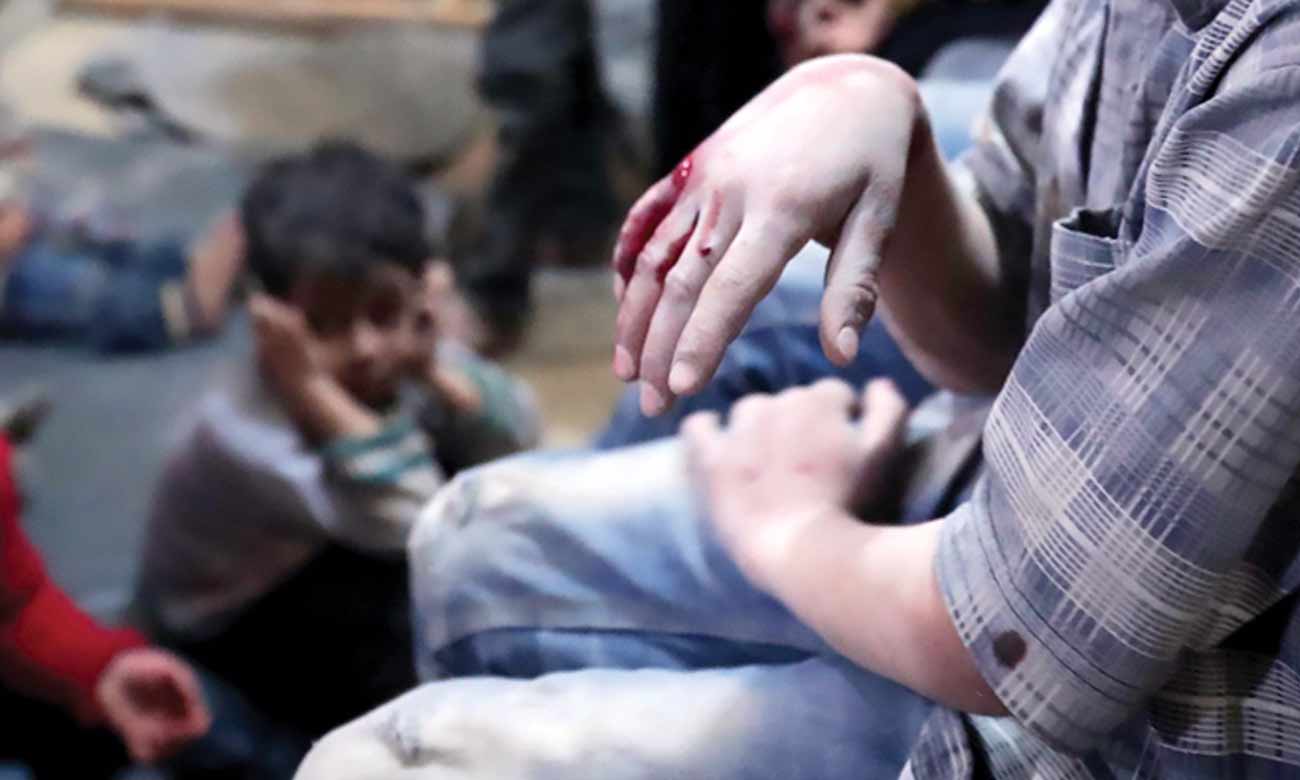
 Children injured as a result of the bombing in Syria - 2017 (AFP)
Children injured as a result of the bombing in Syria - 2017 (AFP)





 A
A
A
A
A
A


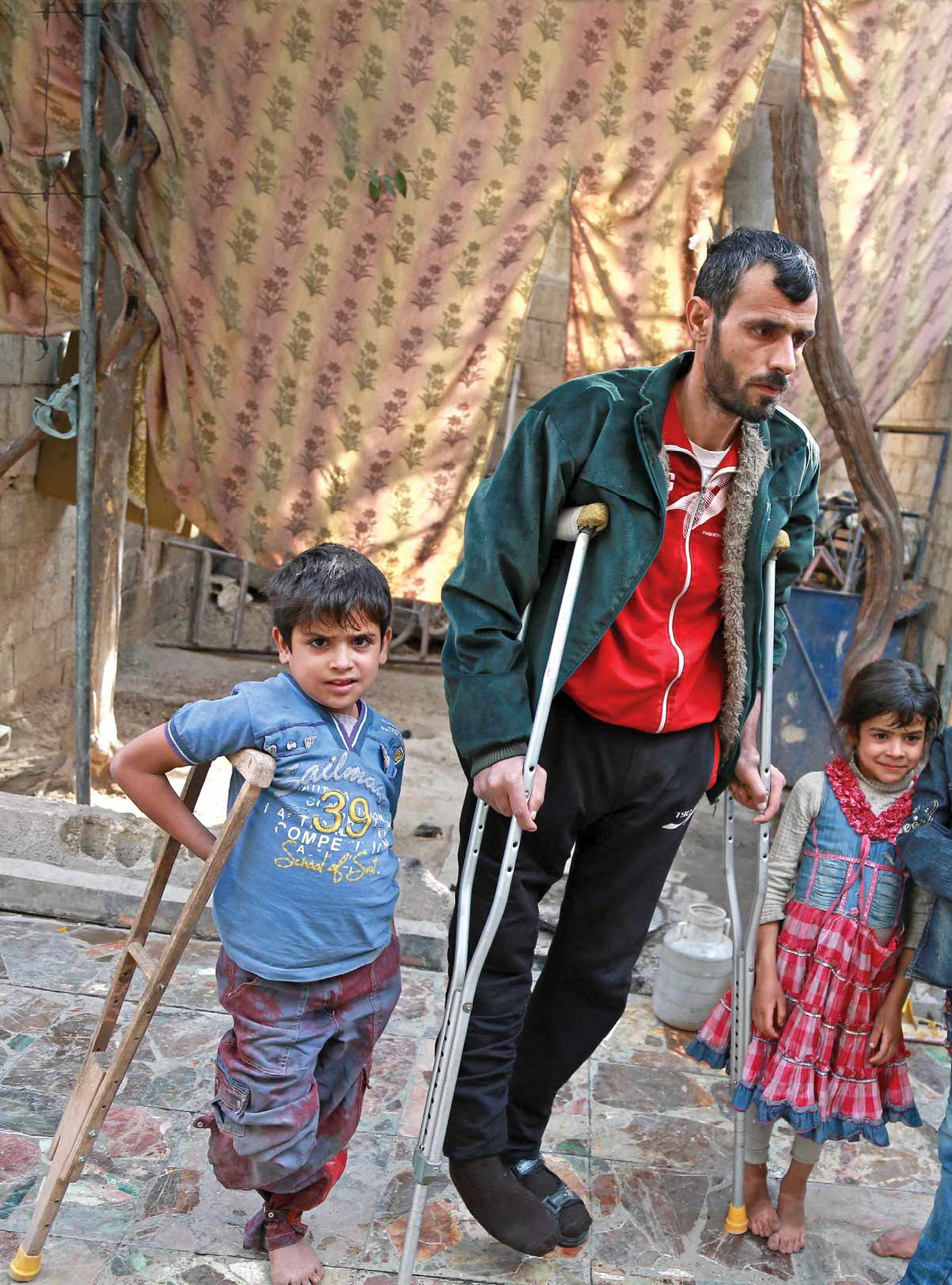




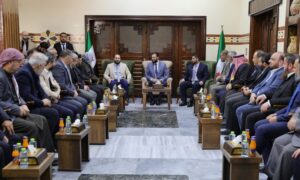
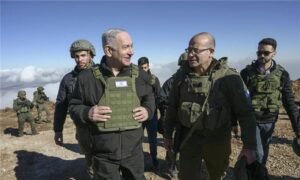
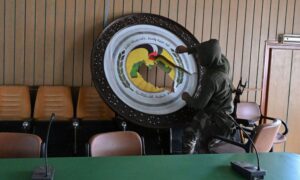
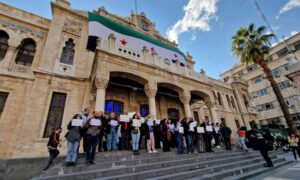
 More In-Depth
More In-Depth